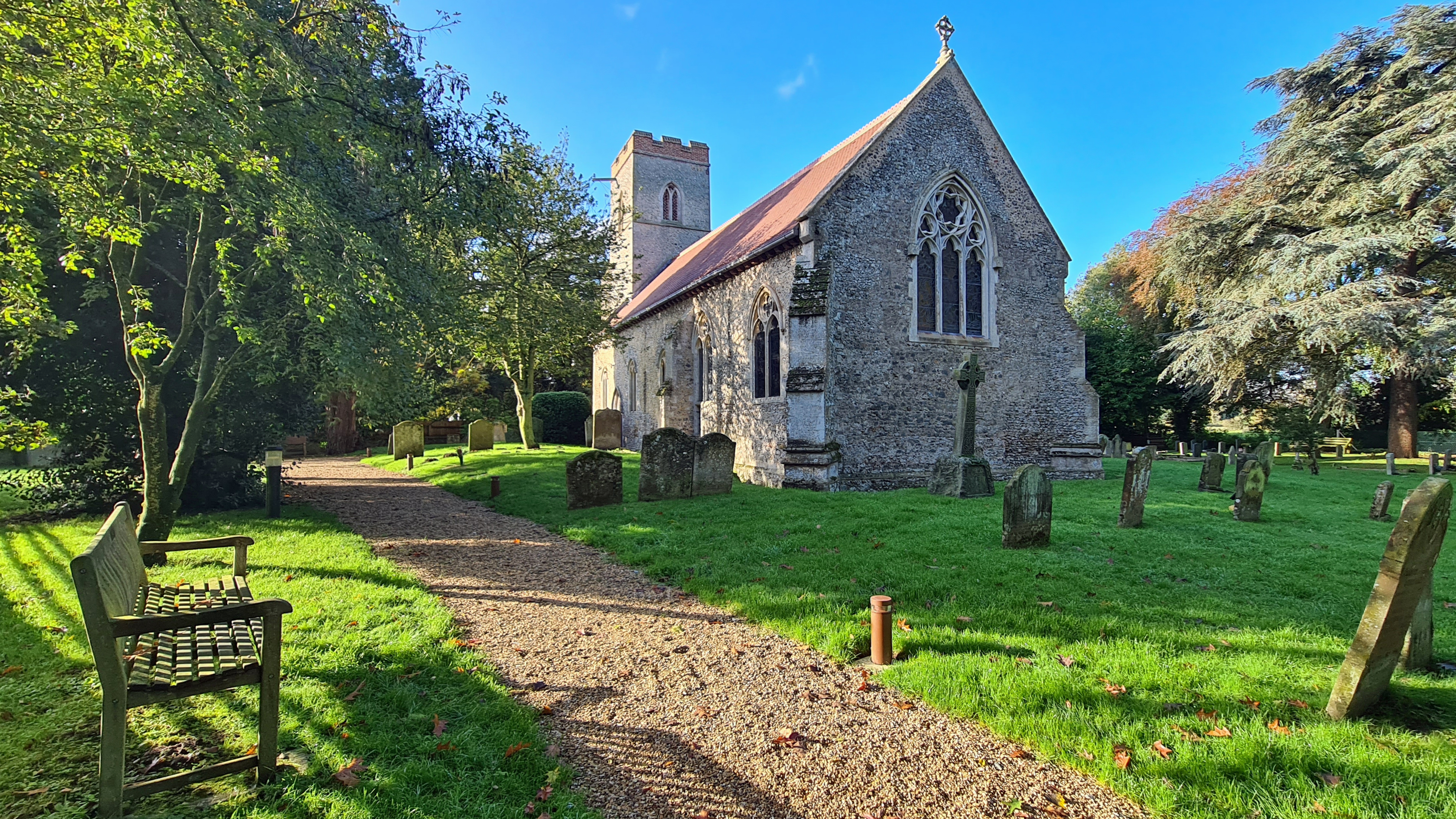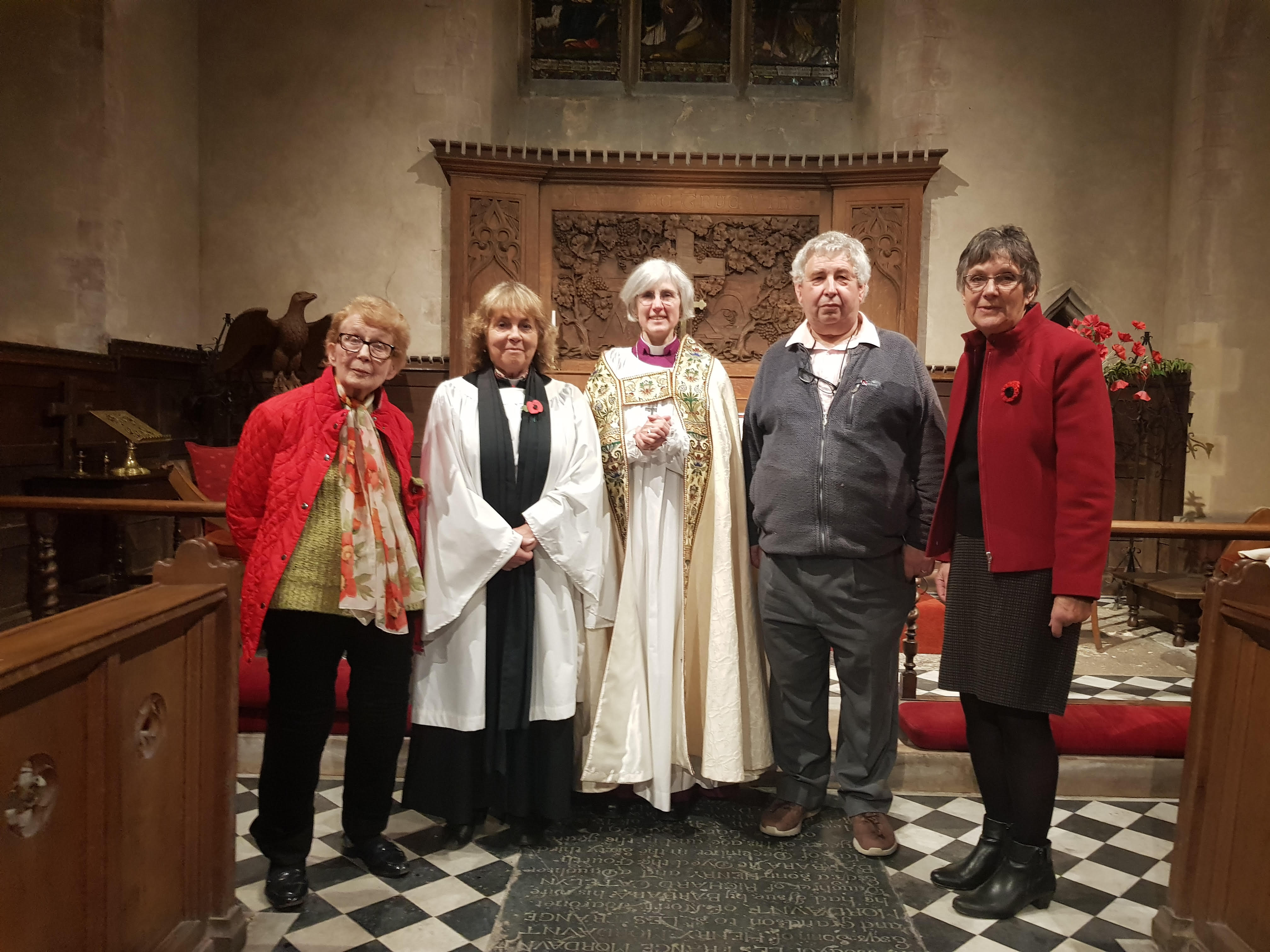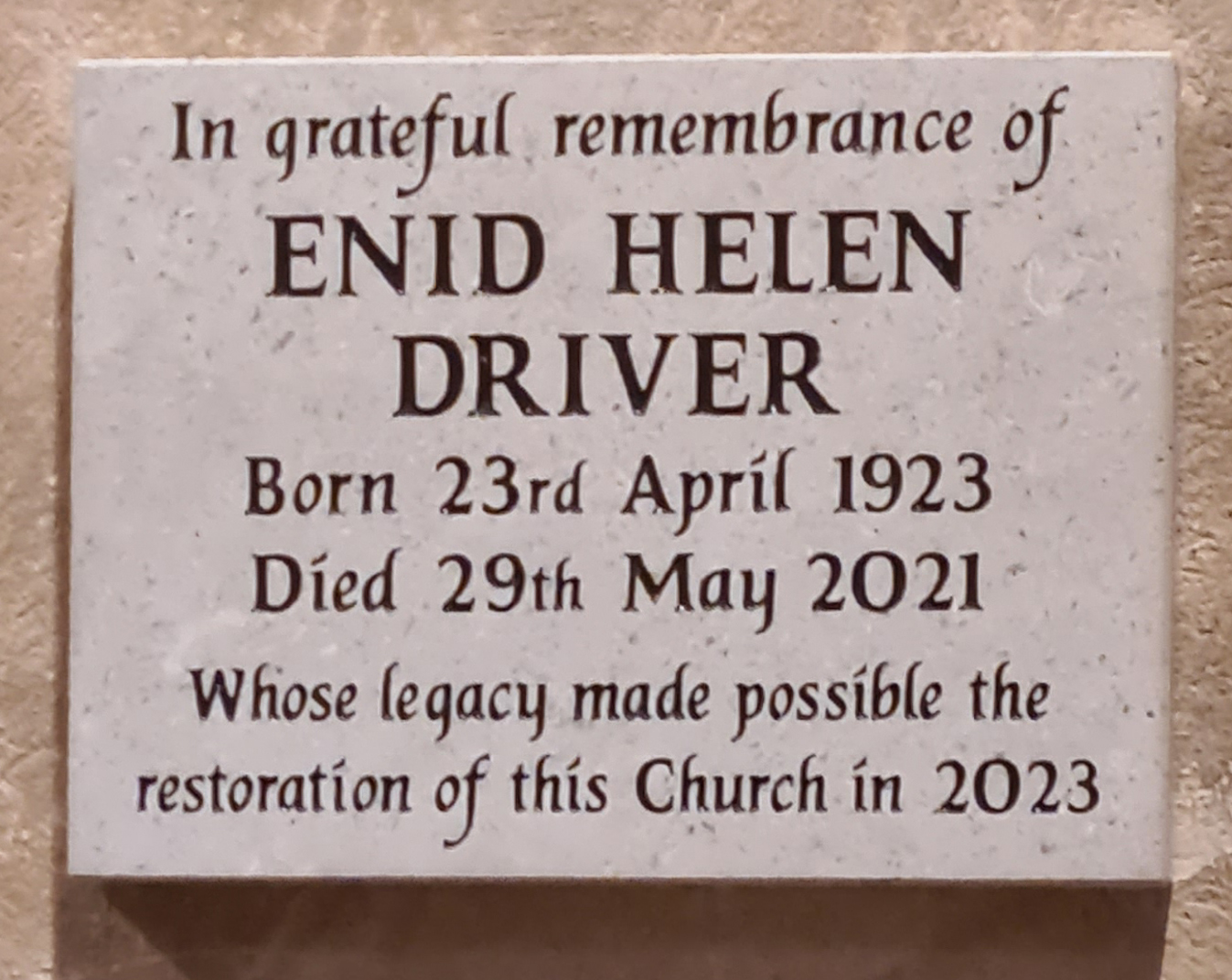St Andrews
Congham
St Andrew's, Congham
Off St Andrew’s Lane
Congham
Kings Lynn
PE32 1DT Grid Ref: TF 712236
Lat: 52.783406 / Long: 0.538259 X: 571280 / Y: 323661
Grade II* listed 13c restored 1873
The Church is open for visitors and all are welcome.
Contacts: Churchwardens. Mrs Helen Lilley 01485 600153
 St Andrew's at Congham has now completed its refurbishment and held its first service in hosting the annual Churchwardens' service and on 12th November 2023, The Bishop of Lynn, held a Dedication service in Church.
St Andrew's at Congham has now completed its refurbishment and held its first service in hosting the annual Churchwardens' service and on 12th November 2023, The Bishop of Lynn, held a Dedication service in Church.
Pictured with Rt Revd Dr Jane Steen are Revd Sue Martin and the Church Wardens, Helen Lilly and Hilary Scase and with Chris Sykes, the Treasurer, who also managed the entire works.
The Church had been closed since January 2023 when scaffolding went up and work commenced in retiling the whole roof and adding new guttering. External brickwork has been repaired and additional work done on the tower. 
Inside has had walls re-rendered and the whole Church deep cleaned. New lighting and heating inside and outside lighting has also been installed. Above all of this, the Church has completely updated its entire audio/visual capabilities with a totally modern microphone and speaker system and remote cameras for recording along with a wi-fi interface to stream events.
The work has been made possible thanks to a generous legacy from the late Enid Driver, former Grimston postmistress.
Regular services details are on the Calendar. The Church is also used for Weddings, Baptisms & Funerals and at Christmas.
‹More photographs of the Church can be seen in "Our Beautiful Buildings" album. Click here.)
Congham with a population of about 250 is 7 miles from King’s Lynn. Although so near a town, it is very much a country village, reached through the attractive and wild Roydon Common. The village is split in two with half on the edge of Grimston and the other half three quarters of a mile away around the church and pub.
Although currently a small rural village, Congham was once a settlement of high importance. Extensive evidence for long-term occupation activity spanning the Iron Age to post-medieval period includes a probable Roman villa, and some painted plaster from it is preserved in King's Lynn Museum.
One of the most interesting periods in Congham’s history is the middle Saxon period when the settlement appears to have been one of a small number of ‘rural centres’ or ‘productive sites’. These are thought to have been trade centres with markets or fairs or possibly ecclesiastical centres, trading both locally and internationally.
Although settlement continued into the late Saxon and medieval periods – as attested by the 13th century church of St Andrew – Congham gradually became the small village we see today.
The River Cong is a tributary of the River Babingley. The spring rises in a meadow pool on the Hillington side of Manor Farm, Congham. From there, the river flows through the wood and over a small waterfall, where in the past it powered all the machinery within the Congham Oil Mill, which is now known as Congham Lodge.The mill is said to have been built for processing whales. Whales were transported from King's Lynn docks by horse and wagon. The mill produced oil from whale blubber. The resultant whale bones were then taken by road to Narborough Bone Mill where they were ground into fertiliser. Some of the whale bones remain as ornaments at Congham Lodge to this day. The waterfall that drove the mill still remains. There would have been a horrendous smell especially in the summer, which was why the mill was situated away from King's Lynn itself.
Sir Henry Spelman, the noted 17th-century antiquary, was born in Congham. He is best known for his detailed collections of medieval records, in particular of church councils. His brother Erasmus also lived in Congham, and his son Henry Spelman was an early settler and explorer of Virginia.
Several members of the Spelman family were buried at Congham. In the 18th century two members of the Nelson family were rectors, Edmund Nelson, Lord Nelson's Father's 1st cousin and namesake, who were at Cambridge together, and Nelson's 2nd cousin James Rose Edmund Nelson.
More recently the church was supported by Everard and Elwes familes who lived in Congham, and there is a set of 40 individually designed kneelers designed by Joan Ross in memory of Susan Gurney (nee Elwes).
Congham is famous for its World Championship Snail Race held on the third Saturday of July, at the super Summer Fete. You can look up details of past runners and the rules covering the race and the dates for the next championship at www.snailracing.net.
The event was covered by "The Times" newspaper and Japanese TV in 2016. You can read "The Times" report on the next page and there is even a short video.